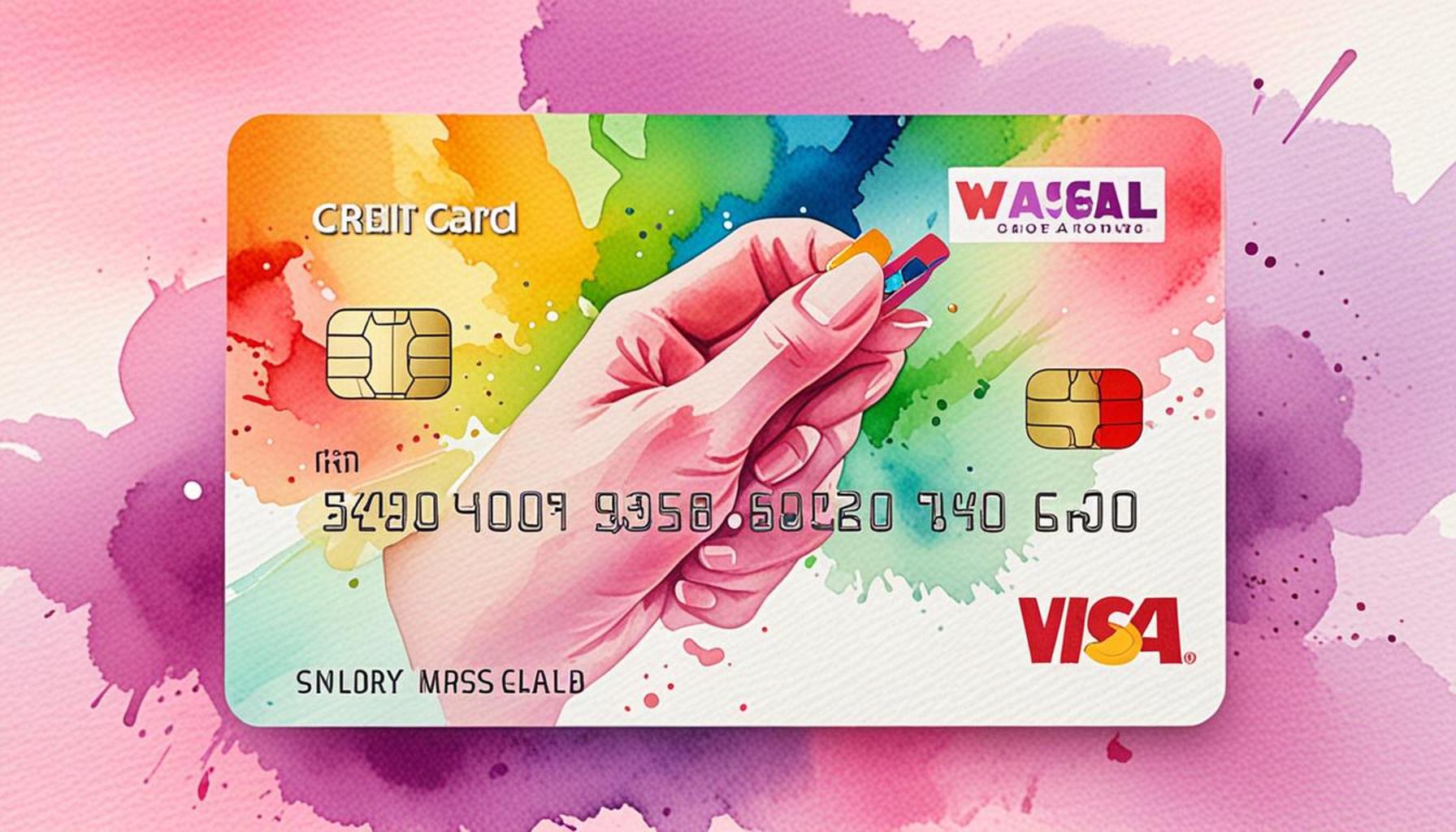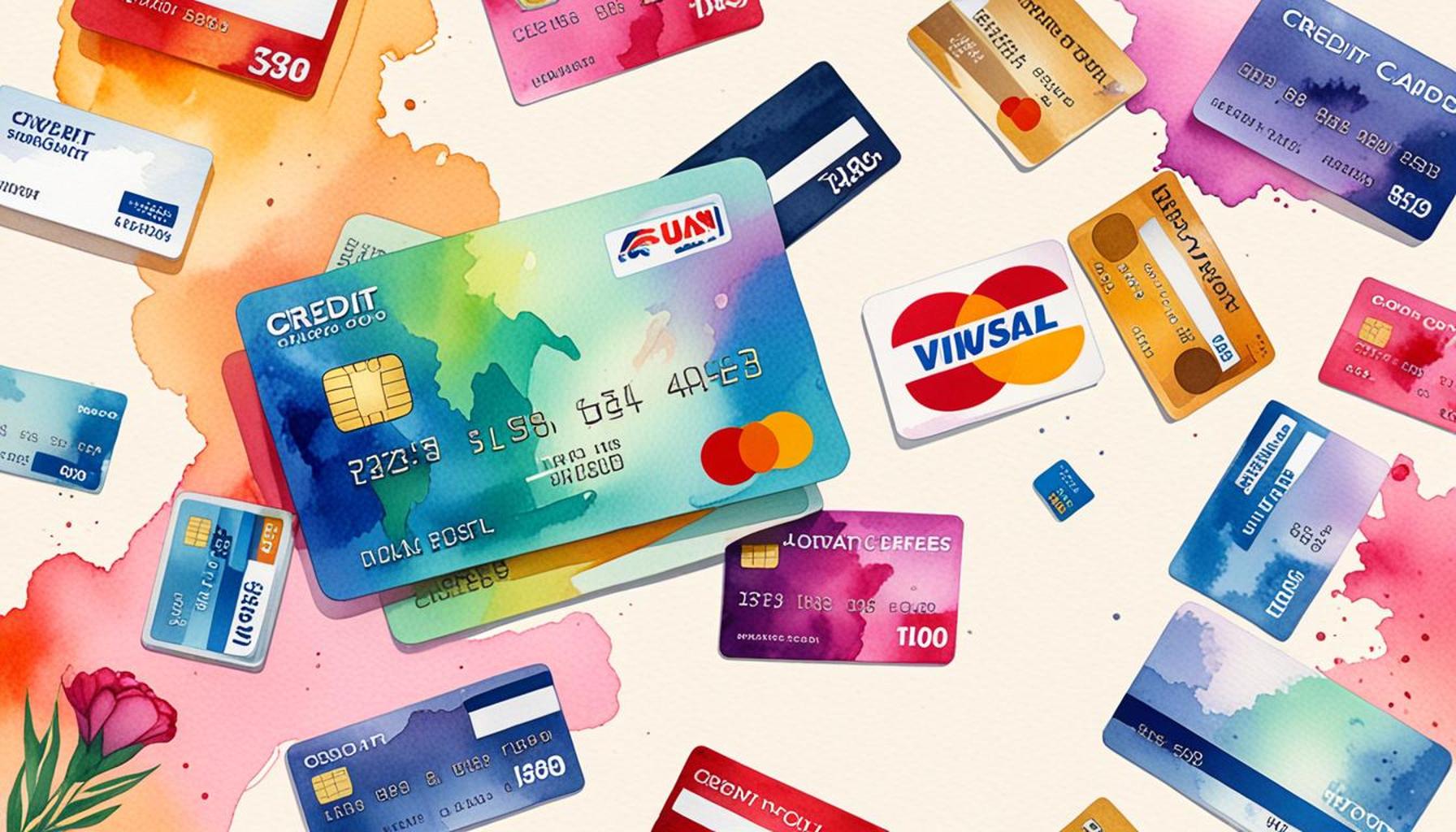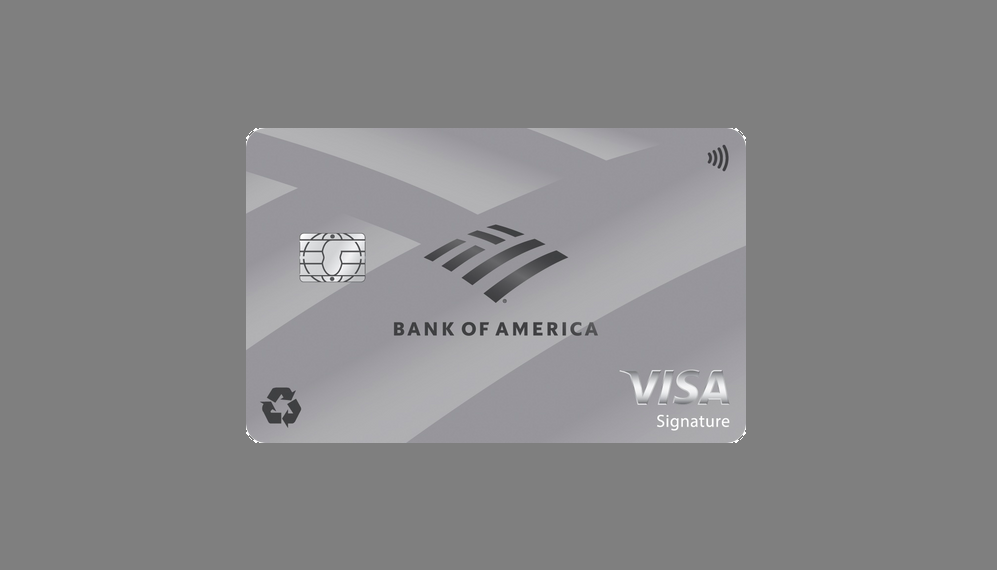How to Choose the Ideal Credit Card for Your Financial Needs

Unlocking the Possibilities of Credit Cards
Choosing a credit card can feel overwhelming, especially with so many options available in the United States. Navigating this financial landscape is essential to maximizing benefits while minimizing costs. Understanding your specific needs is the first step toward making an informed decision.
When assessing credit cards, consider these key factors:
- Annual Fees: Some credit cards charge a yearly fee, which can range from $0 to several hundred dollars. It’s imperative to weigh this fee against the benefits provided. For instance, premium cards may offer extensive travel perks and rewards that exceed the annual cost, making them worth the investment.
- Interest Rates: The Annual Percentage Rate (APR) is a crucial factor, especially if you tend to carry a balance on your card. A lower APR can save you significant amounts in interest charges. According to recent statistics, even a 1% difference in APR can add up to hundreds of dollars over time if balances are not paid in full.
- Rewards Programs: Look for cash back, travel points, or other perks that align with your spending habits. For example, if you frequently shop at grocery stores, a card that offers 3% cash back on groceries can lead to substantial savings. Similarly, travel enthusiasts might benefit from cards that provide airline miles or hotel points, offering perks like free flights or discounted stays.
Your ideal card may differ depending on your lifestyle and financial goals. A frequent traveler may prioritize rewards that help offset travel expenses, while someone seeking to build their credit score might focus on cards with lower fees and favorable terms, such as student credit cards designed to help young adults establish credit history.
As you explore your options, staying informed is vital. Researching various cards, reading customer reviews, and using comparison tools can help you evaluate benefits effectively. Websites like Bankrate or NerdWallet offer comprehensive comparisons reflecting current trends and user experiences. The right credit card can not only help you manage expenses but also open new financial opportunities, such as access to exclusive events, cash rewards, and travel benefits.
Ultimately, understanding the different types of credit cards available and aligning them with your financial habits is essential in unlocking their full potential. Whether you aim to earn rewards or build your credit score, the right approach will ensure your financial future is not just manageable but also rewarding.
DIVE DEEPER: Click here to uncover more insights
Understanding Your Financial Habits
Before diving into the ocean of credit card options, it’s essential to first take a moment to reflect on your financial habits and lifestyle. By understanding your spending patterns, payment preferences, and financial goals, you can make a much more informed choice that aligns with your needs. Here are several important aspects to consider:
- Spending Categories: Analyze where you spend the most. Is it on dining, groceries, travel, or online shopping? Many credit cards offer enhanced rewards for specific categories. For example, if you regularly dine out, selecting a card with higher cash back for restaurants could put extra money back in your pocket.
- Payment Behavior: Do you pay off your credit card balance in full each month, or do you tend to carry a balance? This behavior influences your choice between rewards-focused cards and those with lower interest rates. If you’re likely to carry a balance, prioritizing a card with a low Annual Percentage Rate (APR) is paramount to avoid accumulating high-interest charges.
- Additional Benefits: Look beyond just rewards. Many credit cards come with features such as travel insurance, purchase protection, and extended warranties. These benefits can add significant value, especially for frequent travelers or those making large purchases.
Once you have a clearer understanding of your financial habits, it’s time to evaluate the different types of credit cards available in the market. Broadly speaking, they can be categorized into several groups:
- Cash Back Credit Cards: Typically appealing to those who want simple rewards, these cards offer a percentage of your spending back, often with added bonuses for certain categories.
- Travel Rewards Credit Cards: Ideal for individuals who travel often, these cards allow you to earn points or miles that can be redeemed for flights, hotel stays, and other travel-related expenses.
- Balance Transfer Credit Cards: If you’re looking to pay down existing debt, these cards often feature low introductory interest rates on balance transfers, making it easier to manage and pay off your existing balances.
- Secured Credit Cards: A perfect choice for those looking to build or rebuild their credit. These cards require a security deposit, which typically becomes your credit limit, helping you establish a positive credit history over time.
By identifying which category of credit card best aligns with your financial habits, you pave the way for a well-informed decision. Keep in mind that many cards come with tiered benefits, so understanding the details of each option can make a significant difference in your overall financial health.
As you venture deeper into your credit card exploration, consider utilizing online comparison tools, such as those provided by Credit Karma or WalletHub. These platforms allow you to juxtapose various cards side-by-side, ensuring you fully understand the cost-benefit ratio associated with each option.
Having a solid grasp of your financial habits and the different types of credit cards available is essential. With this foundational knowledge, you can move forward confidently, equipped to unlock the advantages that a well-chosen credit card can provide.
DISCOVER MORE: Click here for details on applying
Evaluating Fees and Interest Rates
After understanding your spending habits and the types of credit cards available, the next critical step is examining the fees and interest rates associated with each option. Regardless of how enticing a card’s rewards program may be, hidden costs can quickly eat into your financial benefits. Here are several key fees and interest rates to keep an eye on:
- Annual Fees: Some credit cards come with an annual fee that can range from a modest $30 to several hundred dollars. It’s important to assess whether the perks provided by the card justify this fee. For example, if you travel frequently and receive complimentary airport lounge access, the fee might be a worthy investment. On the other hand, if you won’t fully utilize the benefits, a no-annual-fee card could be more suitable.
- Foreign Transaction Fees: For avid travelers, this fee can significantly impact your expenses. Foreign transaction fees, typically 1% to 3% of every purchase made abroad, can accumulate quickly. Opting for a credit card with no foreign transaction fees allows you to spend abroad without the fear of extra charges detracting from your budget.
- Balance Transfer Fees: If you are considering a balance transfer to take advantage of lower interest rates, be aware of accompanying fees. Most cards charge around 3% to 5% of the amount transferred. It’s crucial to calculate whether the savings on interest from the new card outweigh the transfer fee.
- Interest Rates (APR): The Annual Percentage Rate (APR) is a critical consideration, particularly if you tend to carry a balance. Look for cards with low APRs if this is the case, as a high APR can lead to significant expenses over time. It’s also worth noting any promotional rates, such as 0% introductory APR offers, which can help you save money when paying down existing debt.
Additionally, understanding how rate changes can affect you over time is important. Some credit cards may offer low introductory rates that increase after a certain period. Awareness of these transitions will allow you to plan your finances more effectively and avoid unexpected charges.
Assessing Reward Structures
With fees and interest rates under control, it’s time to dive deeper into the reward structures that different credit cards offer. Not all rewards are created equal; therefore, identifying which earning potential aligns with your spending style is vital. Consider the following:
- Flat-Rate Rewards: Some cards offer a straightforward cash back percentage across all purchases, usually around 1.5% to 2%. These are ideal for individuals who prefer simplicity without keeping track of specific categories.
- Tiered Rewards: A tiered reward system varies the amount of cash back or points you earn based on the category of spending. For instance, you may receive 3% back on groceries, 2% on gas, and 1% on other purchases. These can be particularly beneficial if you are strategic about where you spend.
- Sign-Up Bonuses: Many cards entice new applicants with lucrative sign-up bonuses, such as 50,000 points after spending $3,000 in the first three months. A bonus of this caliber can be a worth-while incentive for choosing one card over another, particularly if you have planned major purchases in the near future.
Don’t forget to examine the expiration dates and limitations regarding rewards. Some credit cards have restrictions on how long you can carry your points or cash back before they expire, which could limit your benefit if the rewards are not utilized quickly.
Overall, evaluating fees, interest rates, and reward structures is crucial in ensuring that you select a credit card that not only meets your immediate financial needs but also supports your long-term financial health. With these considerations in mind, you are well-equipped to make an informed credit card decision that suits your lifestyle.
DISCOVER MORE: Click here to learn how to apply
Final Thoughts on Selecting Your Perfect Credit Card
Choosing the right credit card involves a thoughtful balance of understanding your personal financial situation and the various card options available to you. As you sift through choices, recall the key components: spending habits, fees, interest rates, and reward structures. Each card offers distinct features, and recognizing which aligns best with your lifestyle can maximize both savings and rewards.
Remember, the ideal credit card is not simply about attractive signage or enticing promotions; it is about securing a card that bolsters your financial health. Take into account annual and foreign transaction fees, as they can erode your benefits. Be proactive in understanding APR structures—seek cards that offer competitive rates and are transparent about any potential increases. Moreover, delve deep into various reward systems—whether it be flat-rate, tiered, or sign-up bonuses—as they can significantly enhance your overall experience and decision-making.
Ultimately, the best credit card for your needs is one that harmonizes with your current financial practices while encouraging more sound financial behavior. So, why not take this opportunity to explore your options? With diligent research and careful consideration, you’ll uncover a card that not only meets your day-to-day needs but also aligns with your long-term financial goals. Empower yourself with knowledge and make a choice that makes sense for you today, and in your financial future.


